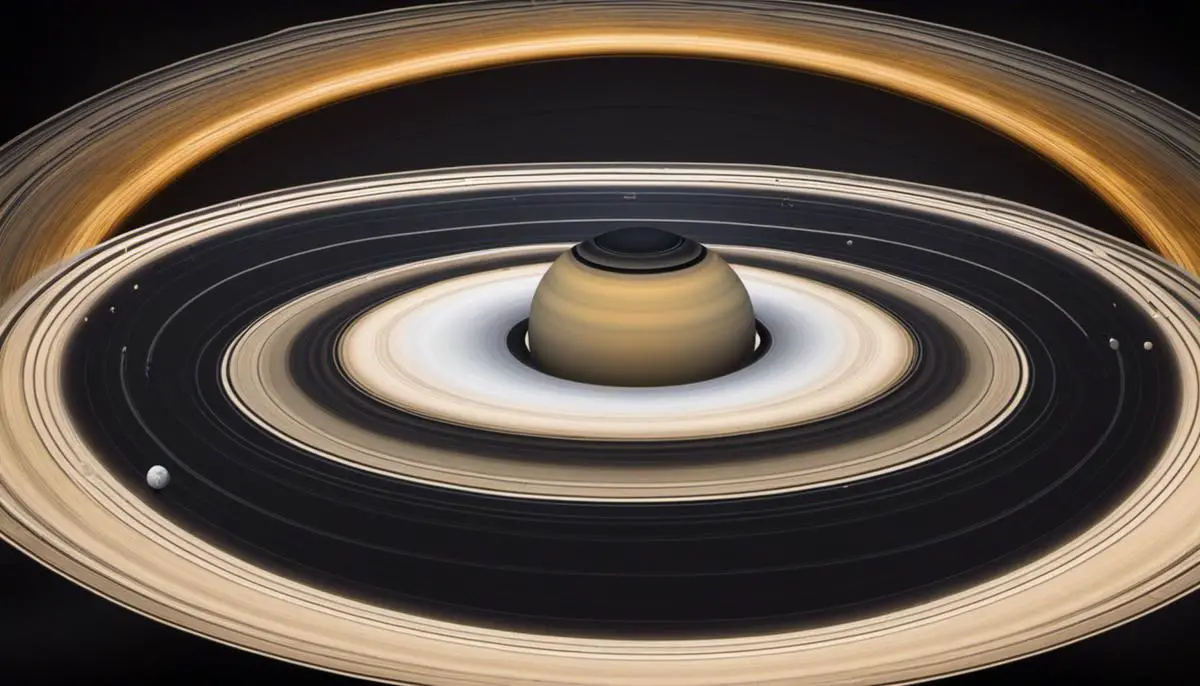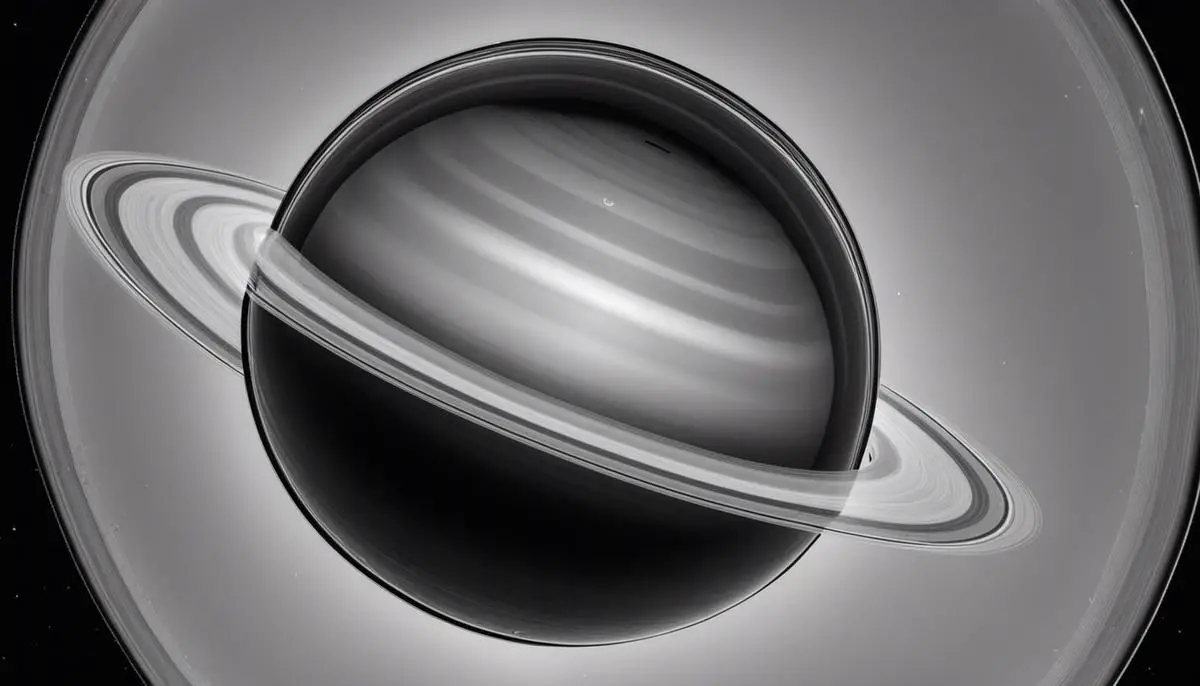The awe-inspiring beauty of Saturn and its iconic rings have long fascinated astronomers and casual observers alike. But beyond their aesthetic grandeur, Saturn’s rings hold a wealth of scientific interest. Part of this interest lies in understanding the physical properties of the rings, most notably their temperature. Determining the heat in the vast expanse of icy particles that make up the rings is critical, as this has a significant impact on the prevailing conditions in Saturn’s surrounding space and even on its moons. Exploration of heat measurements and sources, including the role of the Sun and Saturn itself, offers deeper insights into the temperature dynamics in Saturn’s rings.
Physical Properties of Saturn’s Rings
Physical Properties and Composition of Saturn’s Rings
Saturn’s rings are primarily composed of myriad water-ice particles peppered with tiny rocks and dust. Their size varies greatly, from as small as grains of sand to as massive as mountains. The rings are incredibly thin in comparison to their diameter, with their thickness ranging from 10 meters to 1 kilometer, beginning from the inner D ring to the outermost A ring. Though vast in size with a circumference measuring around 170,000 miles, their accumulated mass is a surprisingly mere fraction of our moon’s.
Understanding the Temperature of Saturn’s Rings
Grasping the temperature of Saturn’s rings necessitates an examination of the materials they’re composed of and their position relative to the Sun. The rings, largely made up of icy particles, have a low heat retention capacity. Their distance from the Sun, a whopping 890.7 million to 1 billion miles, is another essential contribution to their cool temperatures. Data collected by the Cassini spacecraft indicate that the warmer side of Saturn’s rings, exposed to sunlight, experiences temperatures roughly between -163 to -203 degrees Celsius (around -261 to -333 degrees Fahrenheit). This range varies depending on the ring, as some, like the B ring, are more densely packed with particles leading to a slightly warmer temperature due to increased scattering and absorption of sunlight. On the flip side, leaner rings like the A and C rings are generally cooler. Of note, the shadowed side of the rings covered by Saturn experiences drastically colder temperatures, as low as -193 degrees Celsius (-315 degrees Fahrenheit). So, it’s evident that the temperature of Saturn’s rings is in a state of deep freeze, a result of their icy composition and distant location in our solar system.

Heat Measurements and Sources
How We Measure the Temperature of Saturn’s Rings
Despite their proximity to the Sun, Saturn’s rings are extremely cold, colder than one might initially suspect. The estimated average temperature range is from -163 degrees Celsius to -203 degrees Celsius (110 Kelvin to 70 Kelvin), as documented by observations from the Cassini spacecraft using its Composite Infrared Spectrometer (CIRS). The CIRS is a tool that enables scientists to study thermal infrared radiation, heavily tied to heat, and thus yield crucial data about the temperature of the objects under investigation. To assess the heat emanating from Saturn’s rings, Cassini and other spacecrafts utilized direct and indirect heat measurement techniques, including infrared spectroscopy.
Understanding the Temperature of Saturn’s Rings
The temperature of Saturn’s rings is shaped by various heat sources. The Sun, although distanced, is the primary source of heat. However, the icy particles that form the rings possess a high albedo, thereby reflecting most of the Sun’s light, which limits their warming effect. Saturn’s own radiant heat also contributes with a slight warming of the rings. Additionally, the energy from meteorite impacts can cause notable localized temperature variations within the rings. Collectively, the combination of distance from the Sun and high reflectivity of the icy ring particles results in the extreme cold of Saturn’s rings.

Impact on Surrounding Space and Bodies
The Effects of the Rings’ Temperature on Surrounding Space
The cooler-than-Earth temperatures of Saturn’s rings play a significant scientific role as they have a continual effect on surrounding space and Saturn’s multiple moons. The generated heat, affected by sunlight and Saturn’s magnetic field, creates a specially unique environment in the farther regions of the solar system. Furthermore, this heat affects Saturn’s upper atmosphere causing temperature shifts.
Moreover, the temperature fluctuations within the rings, spanning from frigid lows of -274°F (-170°C) to relatively warmer peaks of -163°C during sunlight exposure, can shape the physical dynamics of Saturn’s moons through tidal heating. This process, driven by the gravitational interactions of these celestial bodies, could also induce geological activity on these moons.
This underscores the importance of studying these temperature variations within Saturn’s rings for advancing our understanding of the more remote parts of our solar system. Such knowledge provides us with unique insights into how celestial bodies interact with each other, including the transfer of particles and energy. Recognizing the implications of Saturn’s ring temperatures could open a pathway for discovering the mysteries that the universe holds.

Temperature, as a basic physical property, holds the key to unlocking the mysteries not just of Saturn’s rings, but also of the wider outer solar system. By examining the ways in which heat is measured and the different sources contributing to temperature variation, we gain increased awareness about the workings of the universe. Additionally, acknowledging how Saturn’s rings impact its surrounding space and celestial bodies further opens up new understanding. With this information, humanity inches closer to uncovering the intriguing wonders of the cosmos, step by step, one icy ring particle at a time.
![]()
